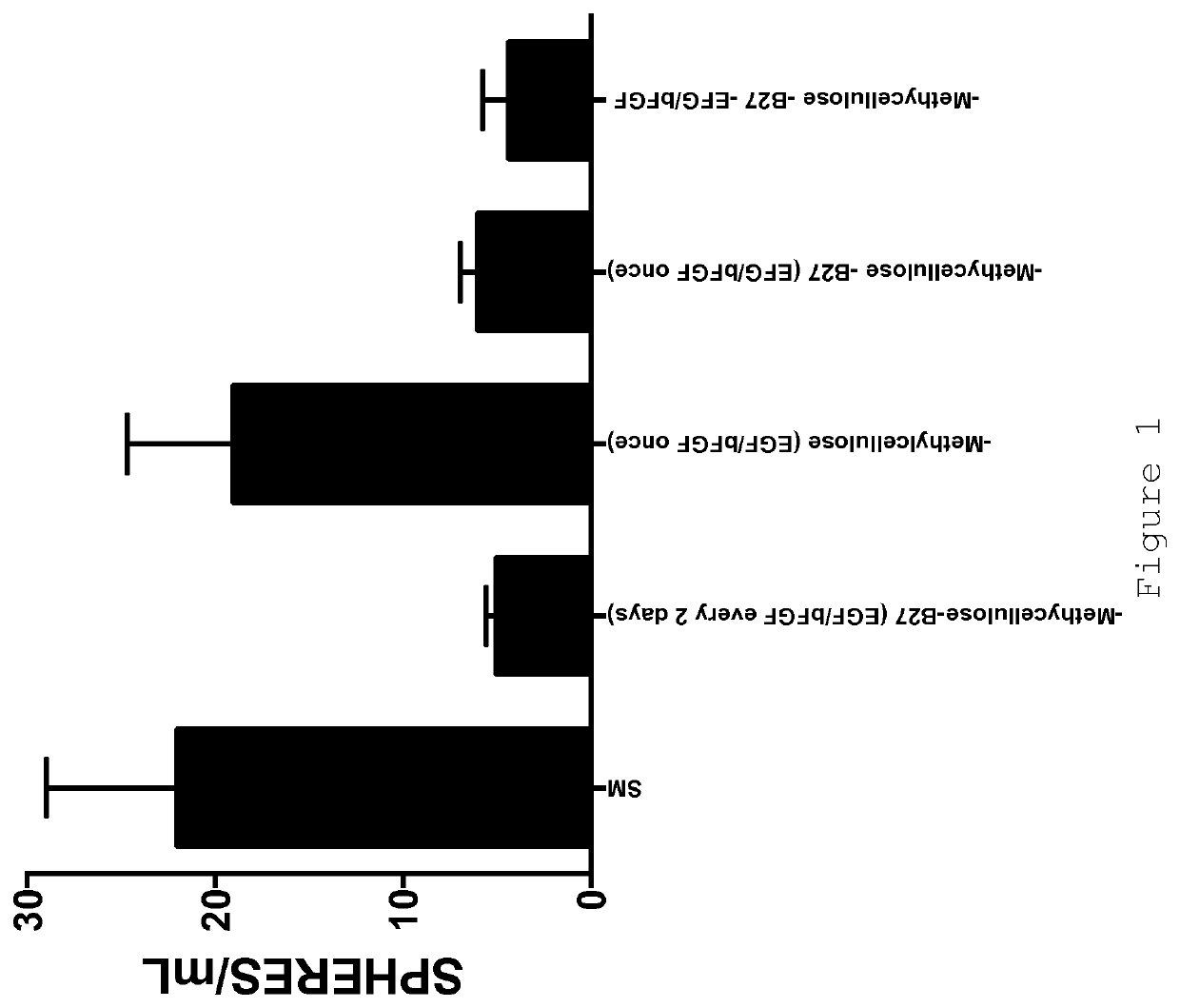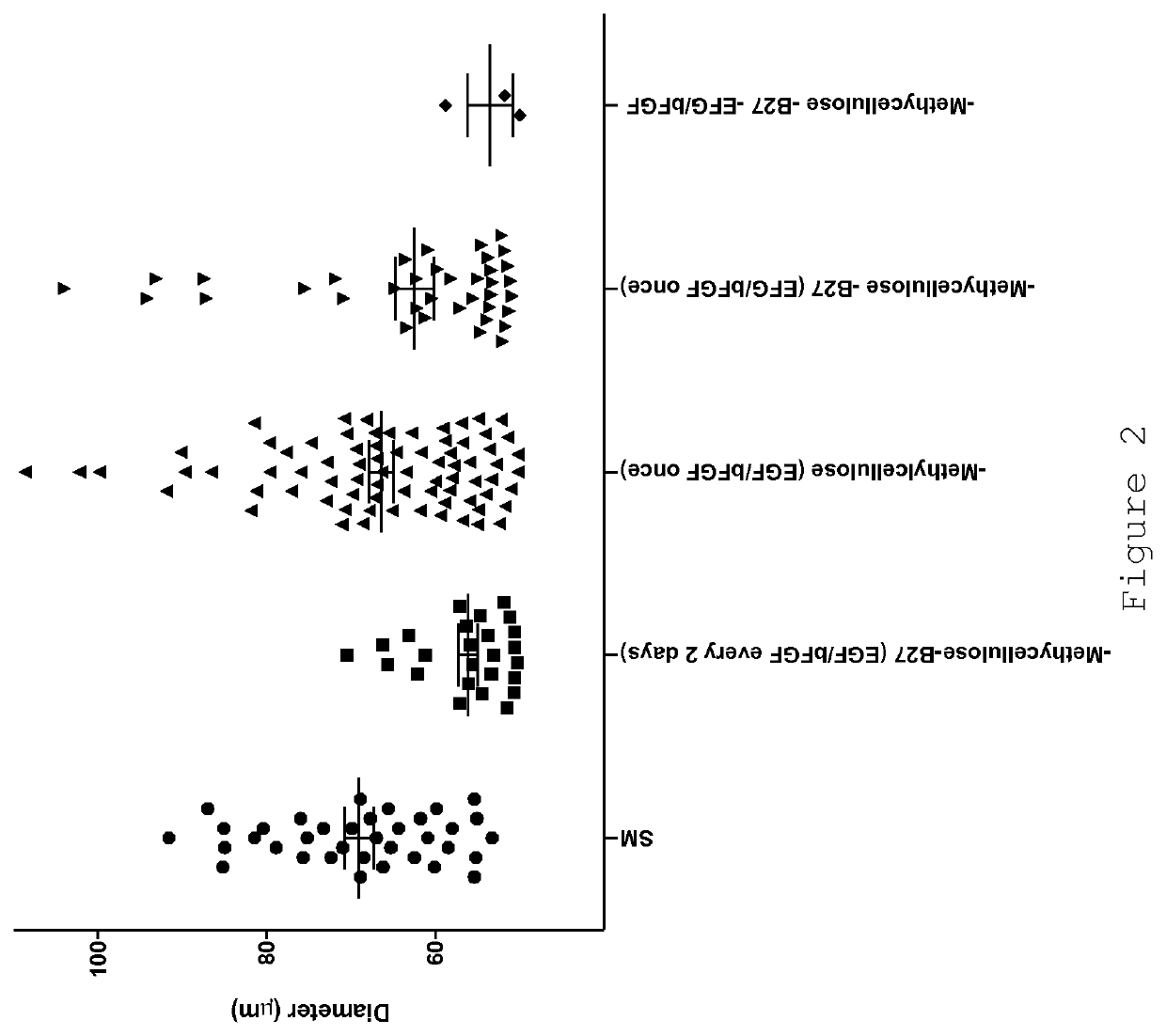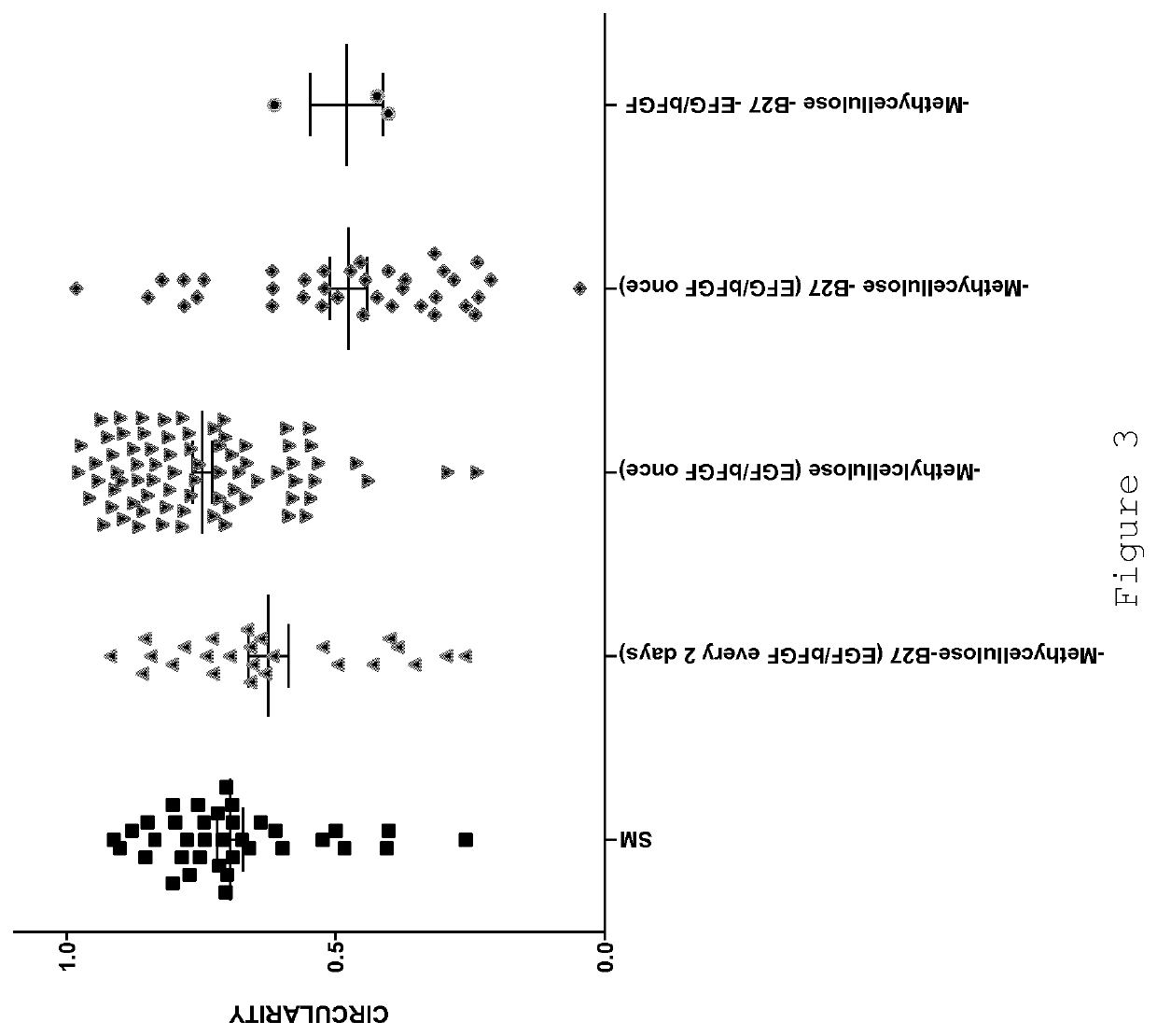Methods for producing cancer stem cell spheroids
a cancer stem cell and culture technology, applied in the field of spheroid culture, can solve the problems of cumbersome, difficult to translate into effective therapeutic strategies, complex biochemistry of cancer stem cells, etc., and achieve the effect of convenient preparation of 3d spheroids and rapid thawing
- Summary
- Abstract
- Description
- Claims
- Application Information
AI Technical Summary
Benefits of technology
Problems solved by technology
Method used
Image
Examples
example 1
Cell Culture Medium Composition and Supplementation on Spheroid Formation
Methodology
[0078]Standard medium (SM):[0079]DMEM / F12 (1:2 mixture)[0080]Methylcellulose (final 5%)[0081]B27 supplement (final 2%)[0082]EGF (final 20 ng / ml)[0083]bFGF (final 20 ng / ml)
[0084]Standard supplementation procedure:[0085]1. Mix base medium (DMEM+F12)[0086]2. Add Methylcellulose[0087]3. Add B27[0088]4. Mix[0089]5. Re-suspend cells in mix.
[0090]Add growth factors (EGF+bFGF) directly to the culture well every 2 days.
[0091]Incubation conditions: 37° C., 5% CO2.
[0092]Disaggregation / dissociation of spheroids was enzymatic (5 min in 1:1 trypsin:DMEM solution at 37° C.) and mechanical (passing through a 25G needle (6 strokes).
[0093]As has been reported previously (e.g. [1] and [5]), certain human breast cancer cell lines are capable of forming spheroids (“mammospheres”). Cells are seeded in DMEM:F12 (2:1) medium without serum, supplemented with B27, EGF (20 ng / ml), bFGF (20 ng / ml) in six-well tissue culture pla...
example 2
g Conditions for Bulk-Phase (Phase 1) Spheroid Production
[0095]In order to enrich cell cultures for spheroid producing cells, spheroids are produced in bulk from single cells grown in monolayers (2D).
Cell Density Optimization
[0096]The number of cells / ml was tested against number of spheroids produced. We observed that upon a certain density spheroid number did not increased proportionally, indicating that spheroids aggregated. This can be seen from the supporting data on spheroid number and representative micrographs using breast carcinoma and glioblastoma cell lines presented in FIGS. 7-10. Therefore, cell density may optimally be maintained below this level, which is specific for each cell line.
[0097]As shown in FIGS. 7 and 8, the seeding density of MDA-MB-436 cells may optimally be ≤25000 cells / ml.
[0098]As shown in FIGS. 9 and 10, the seeding density of U87MG cells may optimally be ≤10000 cells / ml.
example 3
g Conditions for Spheroid Production Multi-Well Plates (Phase 2)
[0099]In accordance with certain embodiments of the present invention, spheroids prepared in phase 1 (as described above in Example 2) were mechanically and enzymatically disaggregated and filtered to render a single cell suspension. Cells were re-suspended in freezing medium (Cell Banker®, AMS Biotechnology (Europe) Ltd, Milton Park, UK) and dispensed 20 μl / well into 96-well plates. The plates may then be flash-frozen at −80° C. for storage. The cells are thawed by adding warm SM (or SM without methylcellulose) and grown in culture for 5-7 days to form spheroids.
[0100]The effect of plating cell density on spheroid production was assessed by plating cells at different densities and then measuring spheroid number and spheroid diameter after 7 days in culture.
[0101]As can be seen from FIGS. 11-14, the number of spheroids produced increased in proportion to the plating cell density. This was initially linear, but at least ...
PUM
| Property | Measurement | Unit |
|---|---|---|
| volume | aaaaa | aaaaa |
| density | aaaaa | aaaaa |
| adhesion | aaaaa | aaaaa |
Abstract
Description
Claims
Application Information
 Login to View More
Login to View More - R&D
- Intellectual Property
- Life Sciences
- Materials
- Tech Scout
- Unparalleled Data Quality
- Higher Quality Content
- 60% Fewer Hallucinations
Browse by: Latest US Patents, China's latest patents, Technical Efficacy Thesaurus, Application Domain, Technology Topic, Popular Technical Reports.
© 2025 PatSnap. All rights reserved.Legal|Privacy policy|Modern Slavery Act Transparency Statement|Sitemap|About US| Contact US: help@patsnap.com



